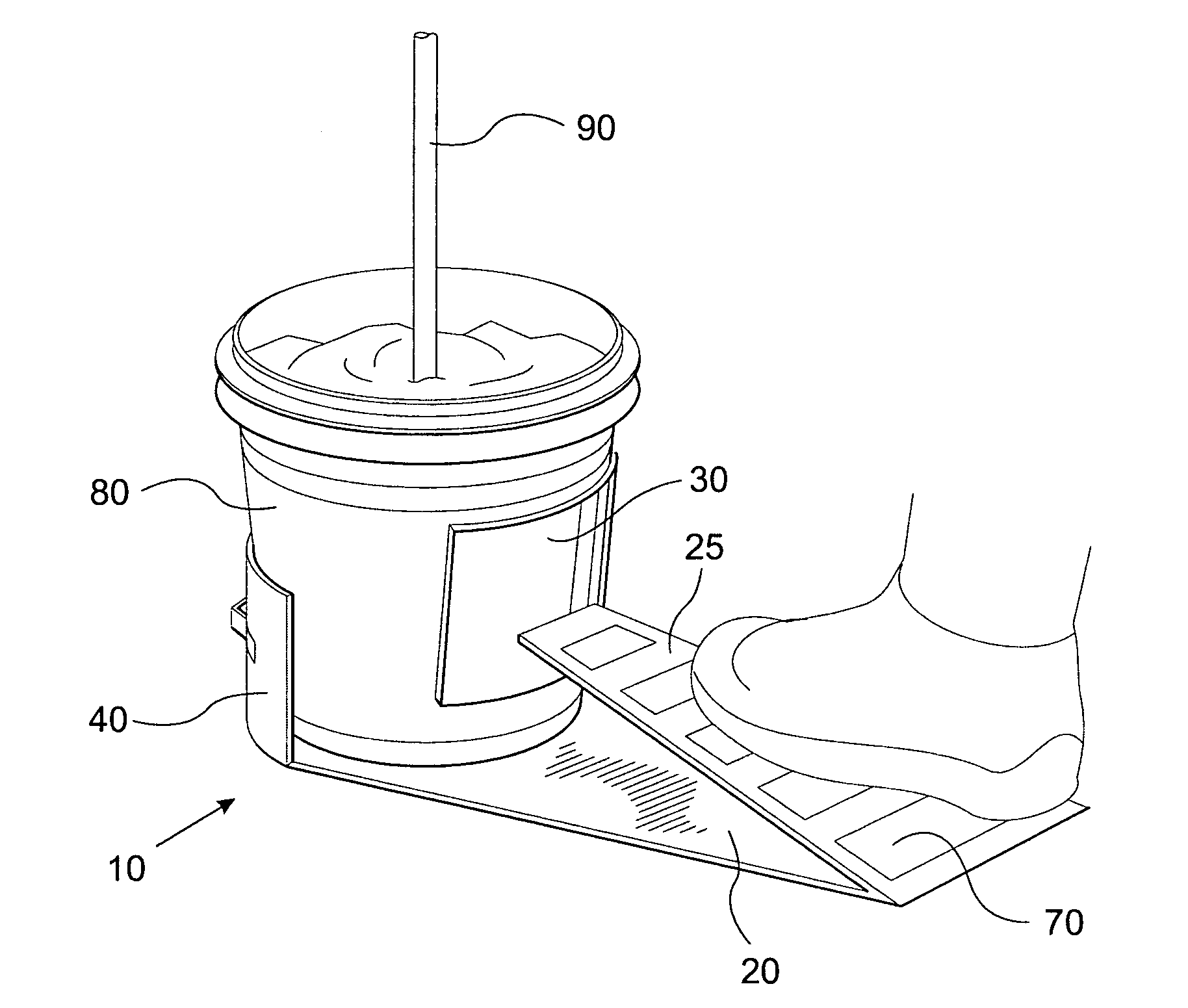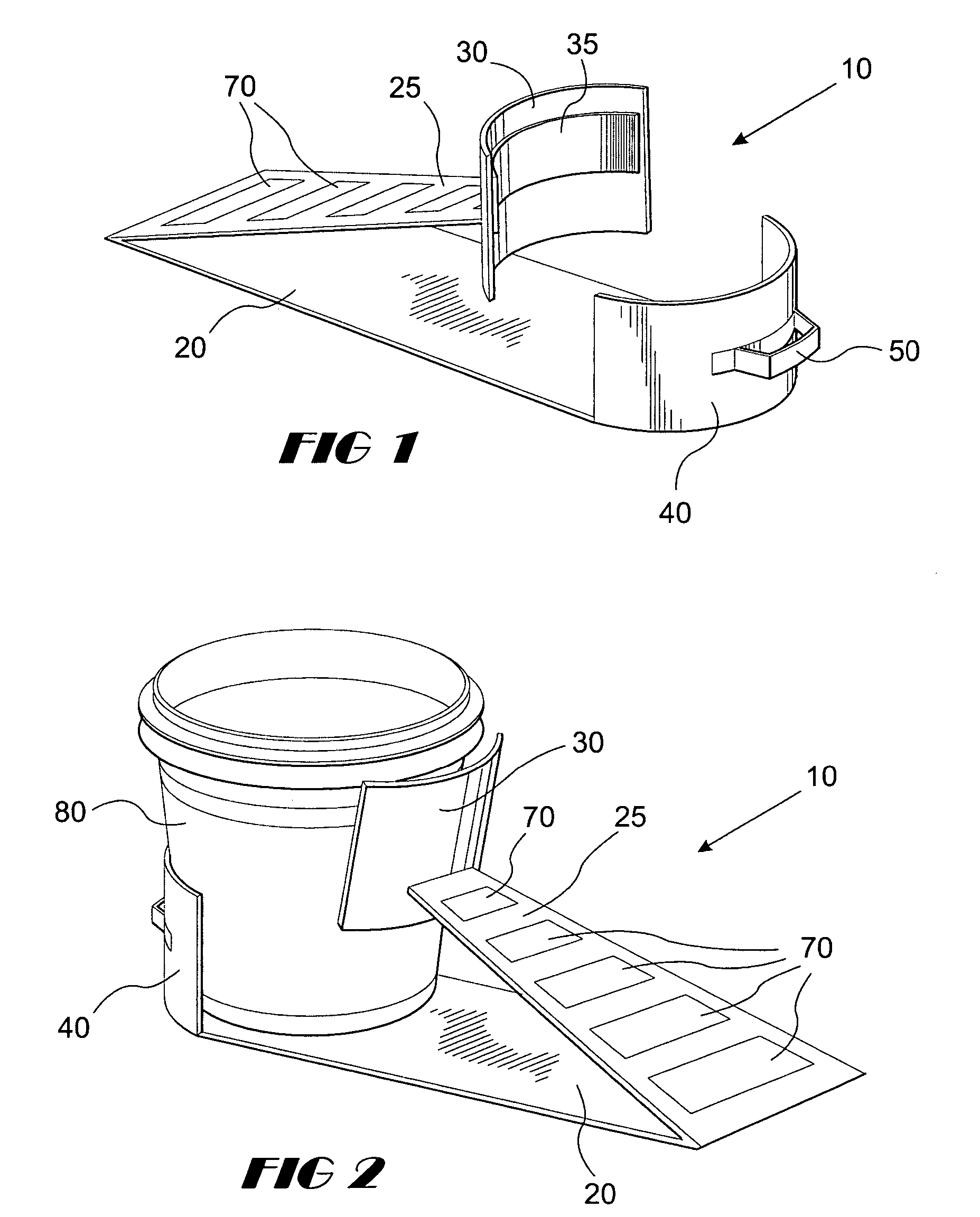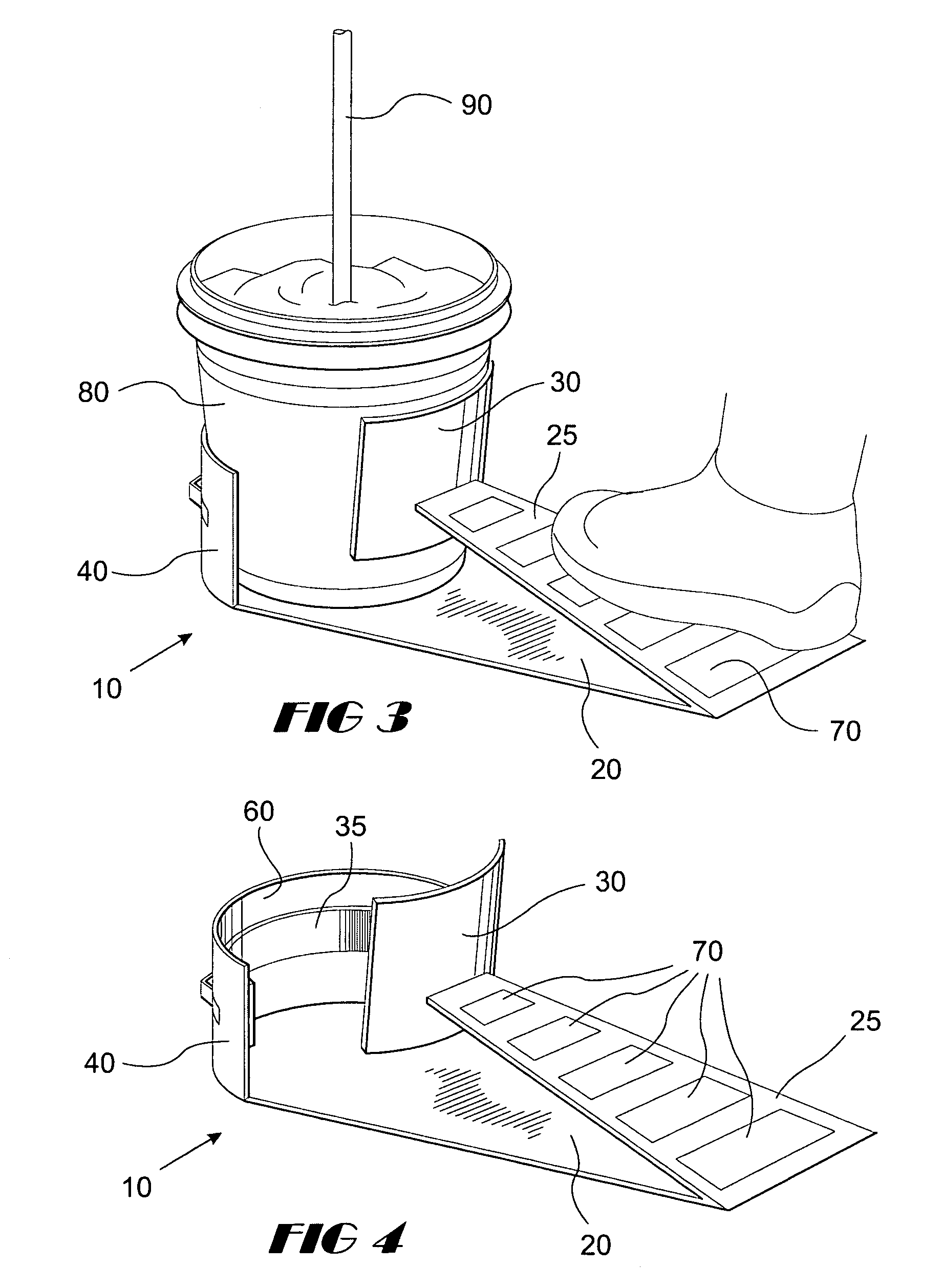Bucket brace and method for use
a technology of buckets and braces, which is applied in the direction of container/bottle construction, rigid containers, lighting support devices, etc., can solve the problems of buckets being prone to spin, causing injury to the second worker or even the first worker, and either technique is somewhat dangerous, so as to avoid physical strain and manufacture cheaply
- Summary
- Abstract
- Description
- Claims
- Application Information
AI Technical Summary
Benefits of technology
Problems solved by technology
Method used
Image
Examples
Embodiment Construction
[0033]Referring in detail to the drawings and with particular reference to FIGS. 1 and 2, a bucket brace 10 for holding down a bucket 80 securely to prevent rotation while a mechanical mixer is used to mix a viscous fluid in the bucket is illustrated. A bucket brace 10 has a base 20 and foot pressure portion 25, which preferably are fabricated from an elongated piece of rigid material such as steel or other metal, polyvinylchloride (PVC) or other plastic, fiberglass, or silicone, or of semi-rigid material such as rubber, that is folded. Alternatively, a hinge or hinges or other device could be used to achieve the relative placement of the base and foot pressure portion. The foot pressure portion 25 has front support 30 attached, preferably perpendicularly, to its unfolded or unhinged end. Both foot pressure portion 25 and front support 30 may be provided with a high friction patterned material 35 to provide extra traction. The unfolded end of base 20 is fitted with rear support 40. ...
PUM
 Login to View More
Login to View More Abstract
Description
Claims
Application Information
 Login to View More
Login to View More - R&D
- Intellectual Property
- Life Sciences
- Materials
- Tech Scout
- Unparalleled Data Quality
- Higher Quality Content
- 60% Fewer Hallucinations
Browse by: Latest US Patents, China's latest patents, Technical Efficacy Thesaurus, Application Domain, Technology Topic, Popular Technical Reports.
© 2025 PatSnap. All rights reserved.Legal|Privacy policy|Modern Slavery Act Transparency Statement|Sitemap|About US| Contact US: help@patsnap.com



